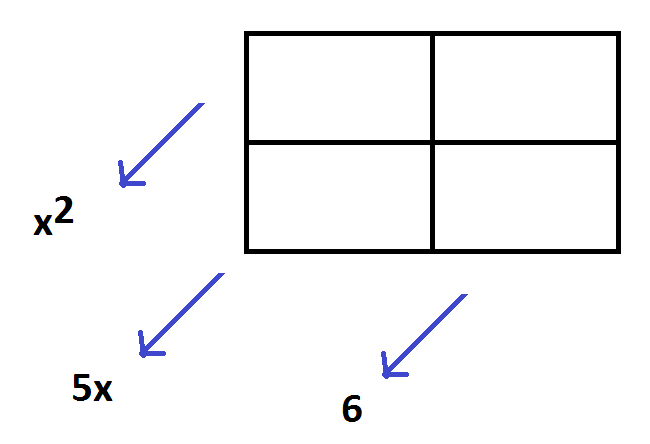The Astounding Power of Area
3.6 A Comment on Factoring Quadratics
Educators might be surprised that I don’t teach factoring as a part of solving quadratic equations. That is, I don’t teach in a quadratics units how to recognize \(x^{2}-5x+6\) as \((x-2)(x-3)\) and \(6x^{2}-7x-5\) as \((2x+1)(3x-5)\), for example.
I omit factoring from the quadratics unit, and do it later on in the year, for one strong reason.
Factoring yields expressions that are associated with pictures of rectangles. But solving quadratics is a story of SYMMETRY, using the symmetry of a square to our advantage. (And making full use of symmetry is a powerful technique in mathematics.) Let’s not muddy the story by bringing in a non-symmetrical idea out-of-the-blue.
The technique we exploit in solving quadratics comes from noticing that we can easily solve a square problem: \(a^2=9\). We cannot, however, solve a rectangle problem \(a\times b = 9\) without extra information. (There are infinitely many solutions to \(ab = 9\).) The symmetry of the square is a potent tool to use.
WHEN TO TEACH FACTORING
I’d prefer the answer to be never, except when it is truly needed in a study of Galois Theory.
My concern with the introduction of factoring in a high-school curriculum is that it chiefly introduced as a technique to answer questions that have been designed to be solved by factoring. Most quadratics never factor nicely. (Care to guess the factors of \(x^{2}+x+1\)?).
Because it is a bit of a false construct in the high-school curriculum, I would prefer to bump the study of factoring to a unit on graphing polynomials. (At least this offers a modicum of motivation about why one might care to factor: One can nut one’s way through thinking what the graph of \(p\left(x\right)=\left(x-5\right)^{3}\left(x-1\right)\left(x+2\right)^{51}\left(x+4\right)^{300}\left(x+10\right)\) looks like.)
Of course, moments of needing to factor might occur earlier and I have no trouble with asking students to treat factoring as a logic puzzle about the area model:
Can you find “nice” numbers that fit this rectangle?

But keep this work as a separate exercise from a first introduction to solving quadratics. The story of the symmetry of a square needs to well and truly shine through and settle in. Keep factoring very separate, at least at first.
Resources
Books
Take your understanding to the next level with easy to understand books by James Tanton.
BROWSE BOOKS![]()
Guides & Solutions
Dive deeper into key topics through detailed, easy to follow guides and solution sets.
BROWSE GUIDES![]()
Donations
Consider supporting G'Day Math! with a donation, of any amount.
Your support is so much appreciated and enables the continued creation of great course content. Thanks!
Ready to Help?
Donations can be made via PayPal and major credit cards. A PayPal account is not required. Many thanks!
DONATE![]()


